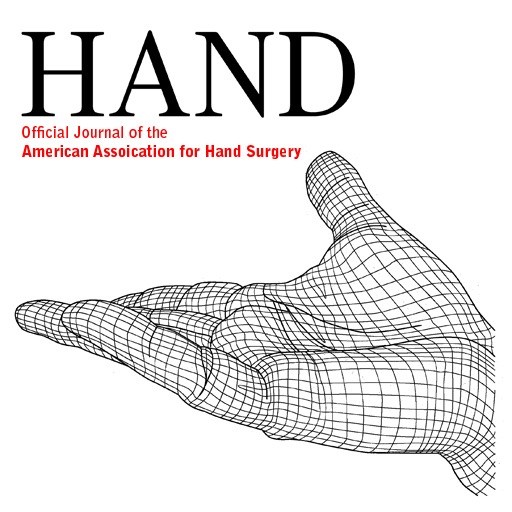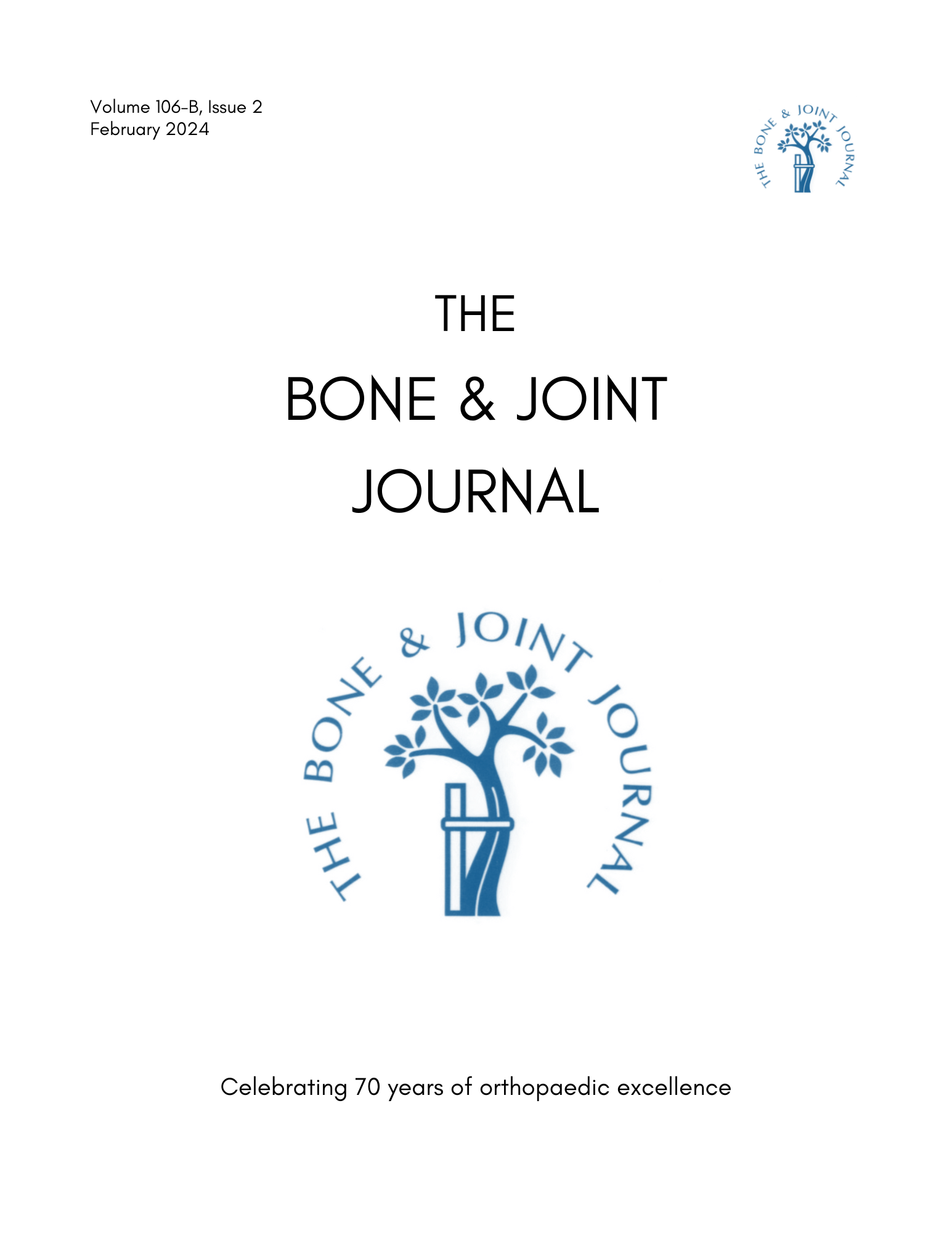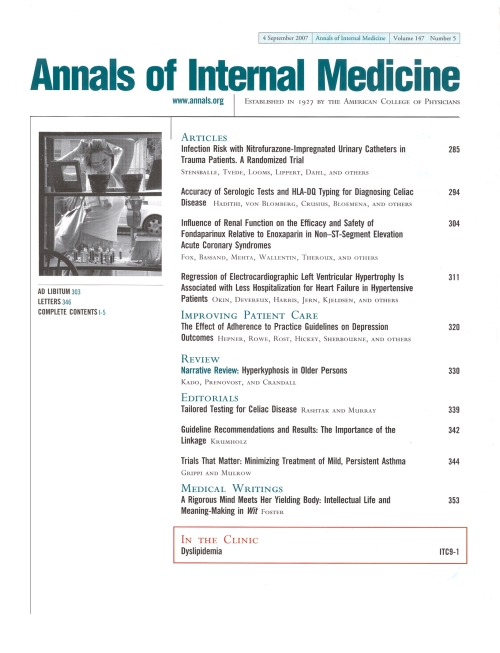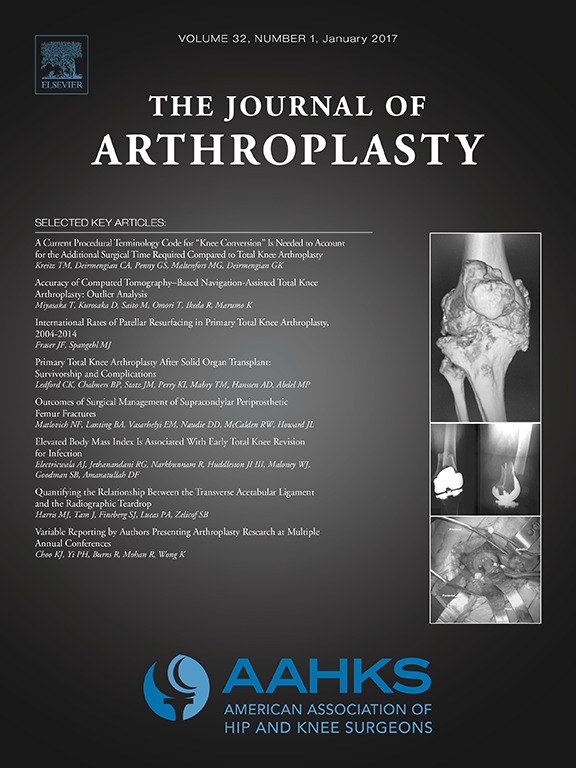PeerView
You are viewing the most viewed ACE Reports by Orthopaedic Resident/Interns over the last 30 days in all specialties.
Displaying
100%
①
Synopsis:
23 randomized controlled trials (2284 patients) comparing open versus endoscopic techniques for carpal tunnel release in patients with carpal tunnel syndrome were included in this systematic review and meta-analysis.A subgroup analysis was also conducted on single- versus dual-portal endoscopic treatment.The primary outcomes of interest included complication and reoperation rates.Secondary outcomes included operative time, the incidence of scar tenderness and pillar pain, normalized satisfaction scale, the incidence of complete or near complete symptom relief, Boston Carpal Tunnel Questionnaire (BCTQ) symptom and function, and time to return to work.All outcomes were similar between the two groups except for time to return to work and incidence of scar tenderness (dual-portal vs open) which all favored the endoscopic group.The incidence of nerve injury was significantly lower in the open-technique group. Overall, the endoscopic...
Read More »
Level 1 Meta Analysis
①
Synopsis:
One hundred and two patients with knee osteoarthritis who underwent total knee replacement were randomized into an intervention group (n=51) that received a digital technology package comprising an exercise app, fitness tracker, and online health coaching, while the usual care group (n=51) received a fitness tracker with notifications turned off.The primary outcome assessed at 3 months was mean knee pain (0-10 scale).Secondary outcomes included function, activity participation, and quality of life, which were measured at 3, 6, and 12 months.At 3 months, the intervention group showed small but not clinically meaningful pain reduction compared to usual care. The secondary outcomes...
Read More »
Level 1 RCT
①
Synopsis:
Two hundred and sixteen patients with advanced osteoarthritis scheduled for primary total knee arthroplasty (TKA) were randomized to receive one of three TKA prosthetic designs from the same system: cruciate-retaining (CR; n=72), anterior-stabilized (AS; n=72), or posterior-stabilized (PS; n=72).The primary outcome of interest was the mean score of all five subscales of the Knee injury and Osteoarthritis Outcome Score (KOOS) measured at a two-year follow-up appointment.Secondary outcomes included individual KOOS subscales, Oxford Knee Score, EuroQol five-dimension health questionnaire, EuroQol visual analogue scale, range of motion, and patient satisfaction.Outcomes were assessed up to two years postoperatively.Overall, patients reported similar levels of pain, function, satisfaction, and general health in all three prosthetic design groups. However, the PS...
Read More »
Level 1 RCT
①
Synopsis:
One hundred and ninety four patients with operative ankle fractures were randomized to undergo early weightbearing (EWB) at 2 weeks postoperatively (n=95) or nonweightbearing (NWB) (n=99) until 6 weeks postoperatively.This was a noninferiority trial design.The primary outcome of interest was the mean difference in the Olerud-Molander ankle score (OMAS) between the two groups at 12 month follow-up.Additional outcomes of interest included time to full weightbearing, time to return to preinjury activities and patient satisfaction.The EWB group demonstrated a noninferior mean difference in the OMAS score when compared to the NWB group.There was no difference in the proportion of patients who were satisfied at 12 month follow-up.The EWB demonstrated shorter time to full weightbearing and return to preinjury activities than the NWB group (p<0.001). No differences in...
Read More »
Level 1 RCT
①
Synopsis:
One hundred patients with ankle osteoarthritis were randomly assigned to receive either intra-articular platelet-rich plasma injections (PRP; n=48) or intra-articular placebo injections (n=52).The primary outcome was the patient-reported American Orthopaedic Foot & Ankle Society (AOFAS) score over 52 weeks.Secondary outcomes included various patient-reported measures assessing pain, function, quality of life, and indirect costs over the same period.The adjusted between-group difference for the patient-reported AOFAS score at 52 weeks favored the placebo group by 2 points (95% CI, 25 to 2; P = .31).With regards to secondary outcomes, there were no statistically significant between-group differences observed as was measured at 52 weeks post procedure. Overall, this indicates...
Read More »
Level 1 RCT
Synopsis:
Two hundred and seven studies with 32959 participants were analyzed in this network meta-analysis.The aim of this study was to compare outpatient treatments for managing acute pain from non-low back musculoskeletal injuries.Results revealed that the treatment with the greatest benefit was using topical nonsteroidal anti-inflammatory agents (NSAIDs).Afterwards, oral NSAIDs were beneficial which was followed by acetiminophen with or without diclofenac.The benefits included relieving pain 1-7 days, as well physical functioning , and symptom relief. Moreover, topical NSAIDs demonstrated increase in treatment satisfaction. Fentanyl and acetaminophen...
Read More »
Meta Analysis
①
Synopsis:
124 patients undergoing total hip arthroplasty for osteonecrosis or femoral head or hip osteoarthritis were randomized to receive either a calcium alginate dressing system (n=62) or a traditional gauze (n=62).Outcomes of interest included the number of dressing changes, length of stay, Stony Brook Scar Evaluation Scale (SBSES), ASEPSIS wound score, pain on a Visual Analog Scale (VAS), Harris Hip Score (HHS), patient satisfaction, and incidence of subcutaneous hematoma.The calcium alginate dressing system showed significantly better results in all outcomes, compared to the traditional gauze group except ASEPSIS scores, VAS pain, and HHS. Two patients in...
Read More »
Level 1 RCT
①
Synopsis:
Thirty randomized controlled trials with a total of 6650 patients who sustained hip fractures classified as AO/OTA31A1-A3 were included in this systematic review and meta-analysis comparing surgical fracture fixation with intramedullary nail (IMN) versus dynamic hip screw (DHS).Pooled outcomes of interest included intraoperative differences such as blood loss and screening time, postoperative differences including hospital stays, time to healing, Harris score as well as complications such as femoral neck shortening, non-union, and femoral fractures. The analysis revealed...
Read More »
Level 1 Meta Analysis
①
Synopsis:
141 patients undergoing total knee arthroplasty were randomized to receive either a cementless implant (n=76) or a cemented implant (n=65).Outcomes of interest included Oxford Knee Score (OKS), Knee Society Function Score, Forgotten Joint Score (FJS), percentage of normal knee, patient satisfaction, incidence of revision, and the incidence of reoperation.Outcomes were assessed at 2 and 6 years post-operation.There were no differences in all outcomes at 2 and 6 years except for patient satisfaction which was significantly better in the cementless group. The rate of...
Read More »
Level 1 RCT
①
Synopsis:
132 patients between the ages of 50 and 80 years undergoing primary, unilateral total knee arthroplasty (TKA) were included in this single-center, 3-arm, triple blinded trial.Patients were randomized to receive either an interspace between the popliteal artery and capsule of the posterior knee block (iPACK; n=44), genicular nerve block (GNB; n=44) or a combination of the two (iPACK+GNB; n=44) alongside combined spinal anesthesia and continuous adductor canal block.The primary outcome of interest was 8-hour postoperative knee pain during movement, measured using a visual analog scale (VAS).The secondary outcomes of interest included VAS knee pain and posterior knee pain during rest and movement in the post anesthesia care unit (PACU) and at 4, 8, 12, 24, 36, and 48 hours, morphine consumption at 12, 24 and 48 hours, sensorimotor function of the tibial and common peroneal nerve (CPN), timed up and go (TUG) scores, range of motion (ROM), and quadriceps strength (QMS).Additional outcomes included the length of hospital stay, quality of sleep, and patient satisfaction.According to study findings, a significant difference for VAS knee pain during movement, VAS knee pain at rest, and VAS posterior knee pain at rest and during movement was found for all groups at 4, 8, and 12 hours, as well as for VAS knee pain during movement at 24 hours, and VAS knee pain at rest and on movement and VAS posterior knee pain on movement at 48 hours.However, this difference was only clinically significant for the iPACK+GNB group VAS knee pain during movement scores at 4- and 8-hours when compared with the iPACK group. No clinically significant...
Read More »
Author verified Level 1 RCT




 LOGIN
LOGIN









